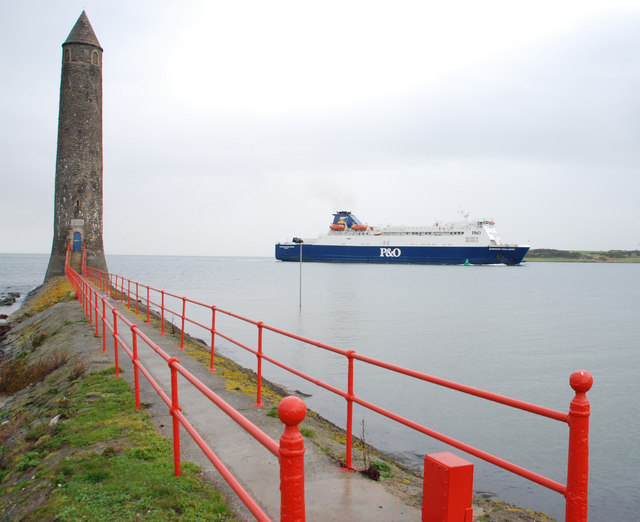Larne is a major gateway to Northern Ireland courtesy of the
ferry link to Cairnryan, 6 miles north of Stranraer in Scotland. Formerly known as Latharna, from Lathar, son
of the pre-Christian King Hugony the Great, one of the earliest records of the
area dates from Roman times, when a galley bound for Scotland was blown off
course to a place called Portus Saxa, believed to be Larne Lough. The lough was later named after the Norse
King Ulfrich during the time of the Viking raids. Fast forward to the 18th century,
when the quays which had been built in the port were used by people emigrating
to America. It was the coming of the
railway which led to Larne being established as the departure point for ferries
to Scotland, initially using a paddlesteamer called the Briton, a service which
lasted until 1863. Three years later the
harbour was bought by James Chaine, a linen merchant’s son, who updated the
port and re-established the link to Scotland.
People arriving at Larne by sea will be reminded of this by the Chaine Memorial Tower which dominates the harbour entrance.
During the First World War Larne became a naval port, then
during the Second World War the port played an important role for the Allied
Forces, including as a conduit for troops preparing for the D-Day
Landings. In the post-war period, after
various ups and downs with efforts to establish ferry links once more, the Larne-Cairnryan
service finally started in 1973. This
outcome, which contributed considerably to the success of the port, was
facilitated by one Colonel Frank Bustard, who was made a Freeman of Larne in
recognition of his efforts.
If you are visiting Larne with a car or motorbike, the
coastal route heading north from the town is highly recommended. We did this route in the other direction
after exploring the Antrim coast, and the journey was a delight due to the way
the road hugged the coastline with the attendant views of Scotland. At one point I nearly caused my husband to
crash the car when I spotted a seal poking its head out of the water a short
distance offshore.
Back in town, the Larne Museum and Arts Centre provides a
fascinating insight into the history of the town, including a display devoted
to a famous warship called the Princess Victoria. For lovers of the great outdoors, as well as the tower, James Chaine’s memory
lives on in the form of Chaine Park, a green space with wonderful views,
especially for people who, like me, love watching the comings and goings of
shipping and ferries. Just to the south
of the port, the ruins of Olderfleet Castle, dating from at least the 13th
century, lie on Curran Point facing the Lough.
 |
The Chaine Memorial, Larne - geograph.org.uk - 620971. Photo by Albert Bridge, via Wikimedia Commons.
|
No comments:
Post a Comment